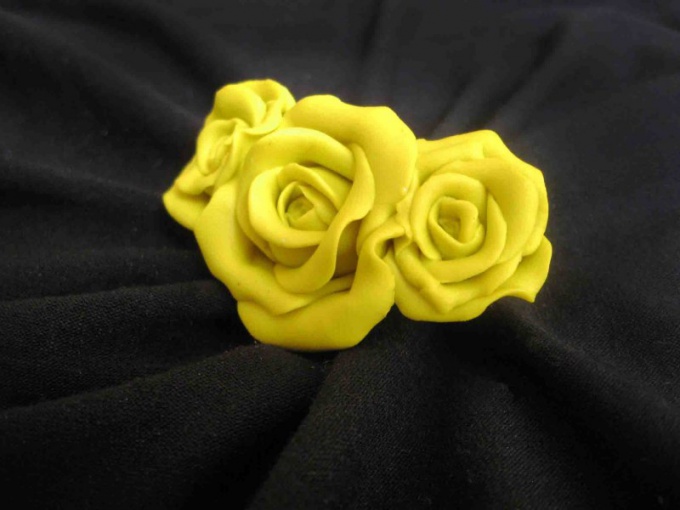You will need
- - flour, half a Cup;
- - salt, finely ground, half a Cup;
- water or PVA glue, a couple of teaspoons;
- - a knife for cutting clay or a conventional knife;
- - food film.
Instruction
1
Knead the dough to create the rosettes. To do this, mix half a Cup of fine salt with the same amount of flour. Select regular, not iodized salt and flour with no additives, or the dough may "ascend", and the finished flower to cover the cracks. Add to the mix one or two teaspoons of water, mix thoroughly. Keep in mind that the batter should be very cool. If necessary, add a little more water. Instead, you can use PVA glue. The dough is mixed on its basis, has greater ductility and is less prone to cracking during drying.
2
Roll out the dough on the table, covered with cling film or a plastic bag, this cover will allow you to easily "unstick" future flower details. The thickness of the dough should be no more than three mm, otherwise the petals will look bulky.
3
Cut the tip of a knife of the future petals of roses, in form they should resemble the real parts of the flower. The optimal number of petals 10-12, but if the dough is thick, it is possible to make a smaller quantity. To make the brim larger workpieces for the center less.
4
Take a petal in hand and gently press with your fingers on the edges so that they become thinner and as it "fizzles". You can also make each individual petal shape, roughness, below a Bud looked more natural.
5
Start creating roses with the centre. Roll the petal into a tube, slightly lift one edge. The following obvate around the first petal, slightly tilt to the outside. So again several times, when the center of the Bud get enough volume, add the petals so that they are increasingly revealed.
6
Dry a rose at room temperature, periodically turning it on one, then on the other side. Then place in the oven and abrogate at temperatures above 100 degrees with the door ajar.
Note
If one or more of rose petals broke off, glue them with PVA glue. Before painting flower, treat the entire surface of this adhesive that will allow the paint to lay down a more even layer.
Useful advice
Salt dough can be stored in the refrigerator for up to several months in a tightly closed container or in a food film.
